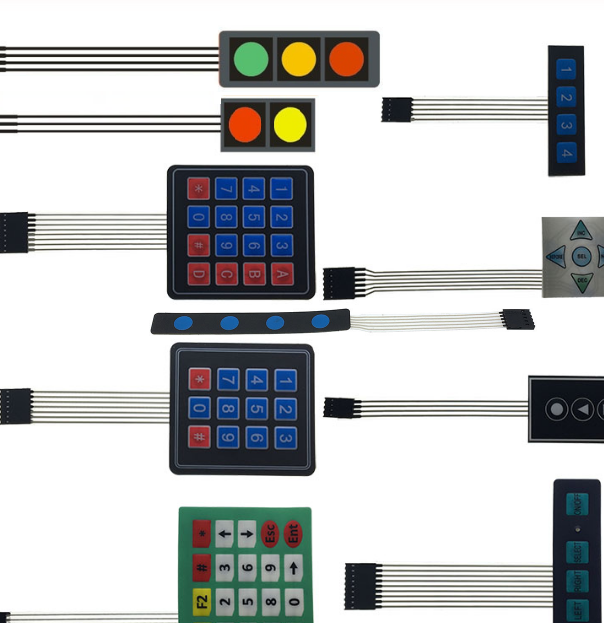
Such membrane keyboards compares favorably with the standard full-size buttons placed on the boards with their thickness (only 1 mm), tightness, as well as the soft and silent stroke of the keys. In addition, due to the presence of a flexible loop, the buttons can be taken out of the case and easily placed on any even uneven surface, because the keys are flexible, and a high-quality adhesive is applied to their back.
The seller has the following types of matrix keyboards:
1. 4x4 (numbers: 0 to 9; characters: *, #; letters: A, B, C, D);
2. 4x3 (digits: from 0 to 9; characters: *, #);
3. 5x4 (digits: from 0 to 9; characters: *, #, ↑, ↓, ←, →; keys: esc, ent, f1, f2);
4.1x4 (numbers: from 1 to 4);
5. square (keys: before, next, inc, dec, sel);
6. 3x1 (characters: ●, ▶, ◀);
7. 1x6 (keys: auto, menu, left, right, select, on / off + LED);
8. 2x1 (2 multi-colored symbols: ●);
9. 3x1 (3 multi-colored symbols: ●);
10. 4x1 (4 characters: ●).
Dimensions corresponding to the keyboards (in the format Keyboard length X Keyboard width X Cable length with connector):
1. 76.9mm X 69.2mm X 83.2mm;
2. 76.9mm X 69.2mm X 85.5mm;
3. 85mm X 73mm X 105mm;
4. 69.2mm X 20.1mm X 79.6mm;
5. 40mm X 40mm X 100mm;
6. 59.5mm X 40.5mm X 105mm;
7. 104.2mm X 24.1mm X 96.2mm;
8. 40mm X 20mm X 100mm;
9. 57mm X 20mm X 100mm;
10.108mm X 15mm X 100mm.
Specifications:
• resource: 1 million clicks;
• working temperature: from -15 ° C to + 65 ° C.
The main advantages of such keyboards are the absolutely low price with high quality performance. Great for projects on Arduino and other homemade.
Cost: ~ 50
